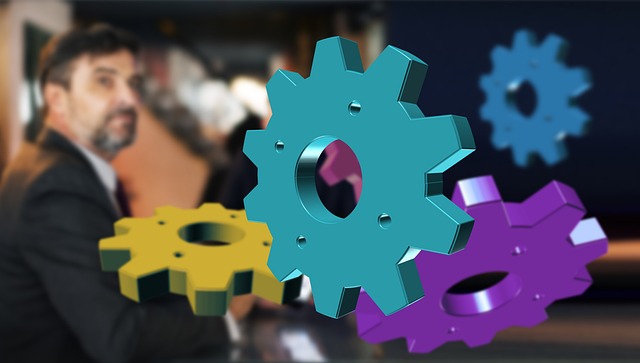
Decision Support in IT Building Smart Coding Solutions
Modern software development teams face an ever‑expanding landscape of tools, frameworks, and best‑practice guidelines. Every sprint brings a new decision about which language to use, whether to adopt a micro‑services architecture, or how to structure continuous integration pipelines. Decision support systems can transform this landscape by providing data‑driven recommendations, risk assessments, and scenario simulations that align closely with an organization’s strategic goals. In the coding domain, the ability to parse large codebases, detect anti‑patterns, and predict maintenance costs gives developers and managers a powerful ally that is not only reactive but also proactive.
Why Decision Support Matters in Software Engineering
Software projects often suffer from scope creep, budget overruns, and time‑to‑market delays. A major contributor to these problems is the lack of structured decision‑making. Developers might choose a language based on personal preference, while managers may opt for a tool that has high popularity metrics but does not fit the team’s skill set. Decision support systems fill this gap by collecting relevant metrics—such as code quality scores, historical defect densities, and performance benchmarks—and translating them into actionable insights.
- Reduces blind experimentation, ensuring every new technology is vetted against concrete data.
- Aligns technical choices with business objectives, such as scaling potential or compliance requirements.
- Facilitates knowledge transfer by embedding best practices into everyday tooling.
Core Components of an IT Decision Support Pipeline
An effective decision support system in the coding realm typically comprises three interconnected layers: data acquisition, analytical modeling, and recommendation delivery. Each layer must be engineered to respect the constraints of real‑world development environments.
“The best decision support system is the one that feels invisible to the developer, yet its presence is felt in every smoother deployment.” – Anonymous CTO
Data Acquisition: The Foundation of Insight
Data acquisition begins with instrumentation of the development lifecycle. Tools such as static analyzers, code coverage reporters, and build logs generate raw telemetry that, when aggregated, reveal patterns that are otherwise opaque. For example, a static analysis tool can flag repeated instances of the same security flaw across a codebase, highlighting a systemic design issue that manual review would overlook.
Beyond code‑level metrics, operational data—like mean time to resolve incidents and customer‑reported bug severity—offers a higher‑level view of system health. Integrating these data streams requires careful design of APIs and data pipelines to ensure that no critical insight is lost during transmission.
Analytical Modeling: Turning Numbers into Knowledge
Once data is collected, machine learning models or rule‑based engines interpret it. Decision support systems often employ a hybrid approach:
- Statistical Baselines: Compute moving averages of code churn, defect rates, and deployment frequencies to establish healthy ranges.
- Predictive Algorithms: Use regression models to forecast future defect density based on current code complexity metrics.
- Prescriptive Rules: Apply expert knowledge—such as “If a module has more than 20% duplicated code, recommend refactoring” – to produce actionable items.
These models must be continuously retrained or recalibrated to accommodate evolving codebases and team dynamics. In practice, a lightweight feedback loop where developers flag false positives or missed issues ensures the system remains relevant.
Recommendation Delivery: Embedding Decision Support into Daily Work
The ultimate value of a decision support system lies in its delivery mechanism. Recommendations should surface at the right time and in the right context to avoid alert fatigue. Common delivery channels include:
- IDE Extensions: Inline suggestions and quick‑fix prompts that developers see as they write code.
- ChatOps Bots: Automated messages in team chat platforms summarizing critical findings and next steps.
- Dashboard Widgets: Real‑time visualizations for managers to track adherence to architectural guidelines.
By integrating recommendations directly into existing workflows, decision support becomes a natural part of the development cycle rather than a separate process that developers must remember to consult.
Case Study: Refactoring Decisions in a Large Micro‑services Project
Consider a multinational organization that recently transitioned from a monolithic architecture to micro‑services. The team deployed a decision support system that monitored inter‑service communication latency, code duplication, and API contract stability. The system identified a cluster of services that shared a common code base but were not leveraging a shared library, resulting in duplicated maintenance work.
Based on the recommendation engine’s analysis, the architecture team introduced a lightweight shared library and updated CI pipelines to enforce usage. Subsequent iterations saw a 30% reduction in duplicated effort and a measurable improvement in service response times. This example illustrates how decision support can surface hidden inefficiencies and catalyze meaningful change.
Challenges and Mitigation Strategies
Implementing a decision support system in the coding domain is not without hurdles. Common challenges include data quality, model drift, and organizational resistance. Below are strategies to address each challenge:
- Data Quality: Establish strict validation rules and automated data checks to ensure that the telemetry fed into the system is accurate and complete.
- Model Drift: Schedule periodic model retraining sessions and monitor prediction accuracy metrics to detect when models become stale.
- Organizational Resistance: Foster a culture of experimentation by encouraging developers to pilot recommendations in sandbox environments and share success stories.
By proactively tackling these obstacles, teams can maintain the credibility and utility of their decision support tools over time.
Future Directions: AI‑Powered Decision Support
The next wave of decision support will likely leverage advanced natural language processing and generative AI. Imagine a system that can read through code comments and documentation to infer architectural intent, then suggest refactorings that preserve intent while improving maintainability. Or a system that automatically drafts pull request descriptions based on the changes it detects, reducing the cognitive load on reviewers.
As AI capabilities mature, decision support will become increasingly personalized, learning individual developer preferences and tailoring recommendations accordingly. The result will be a more seamless blend between human intuition and data‑driven insight.
Conclusion: Empowering Teams Through Informed Choices
Decision support in the realm of software engineering is more than a buzzword; it is a tangible mechanism that bridges the gap between complex data landscapes and actionable development practices. By structuring data acquisition, analytical modeling, and recommendation delivery around the realities of coding teams, organizations can reduce risk, accelerate delivery, and cultivate a culture of continuous improvement.
In an industry where time is money and quality is paramount, embedding decision support into the very fabric of development workflows equips teams to navigate uncertainty with confidence. The result is smarter coding solutions that not only meet today’s demands but also adapt gracefully to tomorrow’s challenges.


